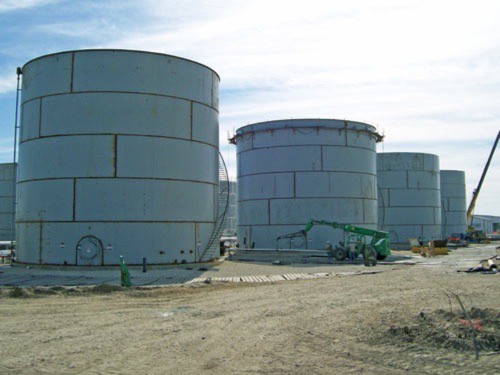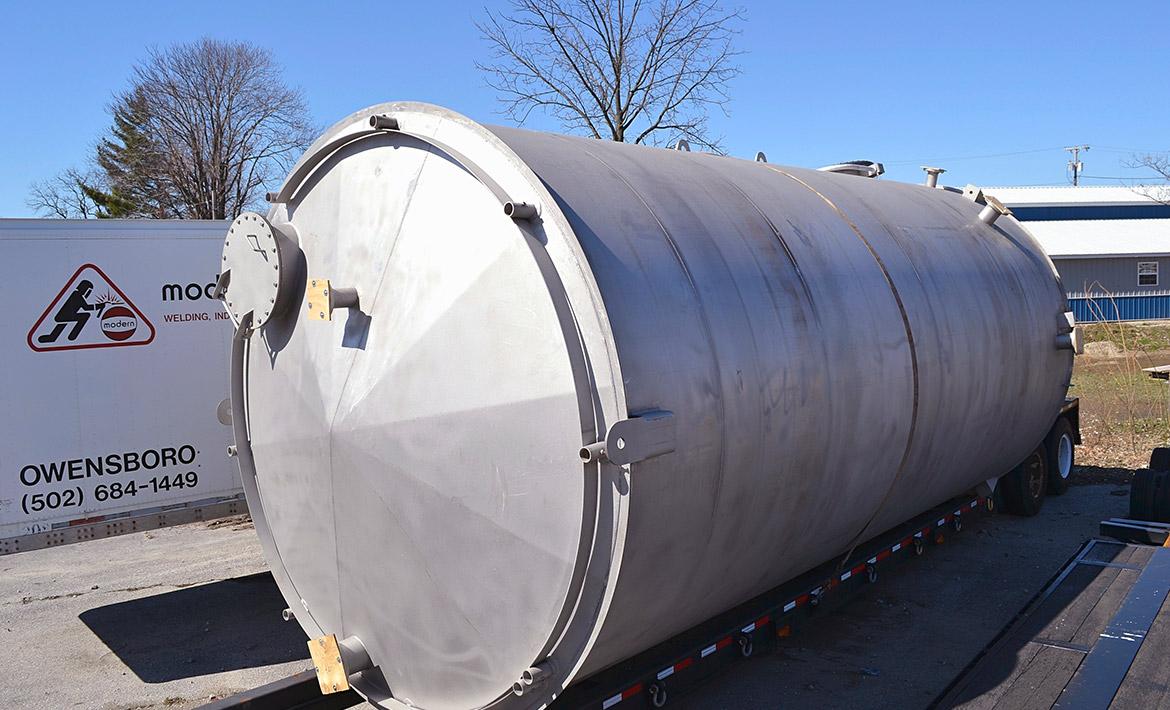The Connection Between API 650 Welding Inspection and Long-Term Equipment Service Life
Understanding the Value of Welding Inspection in Quality Control Processes
Welding assessment is a necessary component of quality control in building and production. It guarantees that welds conform with established criteria, which is essential for structural stability. Various inspection strategies, from aesthetic to ultrasonic screening, assistance recognize problems early. This positive strategy not only prevents costly fixings however additionally enhances safety. Recognizing the nuances of welding evaluation can disclose its more comprehensive implications for industry compliance and reputation. API 650 Welding Inspection. What lies beneath the surface area of these practices?
The Function of Welding Evaluation in Quality Assurance
While welding is a critical process in various sectors, its top quality and stability pivot considerably on effective evaluation practices. Welding evaluation works as a protect, guaranteeing that welds satisfy well established criteria and specs. This procedure not only identifies issues however likewise evaluates the overall workmanship, therefore adding to the security and durability of bonded frameworks. Evaluations are indispensable to quality assurance, as they aid stop expensive failures and keep compliance with industry regulations. By using experienced inspectors, companies can enhance their functional performance and support their reputations. Furthermore, the understandings acquired from evaluations can notify constant improvement, causing better approaches and training for welders. Eventually, welding examination serves as a critical link in the high quality guarantee chain, making certain that every joint is reputable and qualified of enduring the roughness of its desired application. This persistance is crucial for the honesty of infrastructure and the safety of end users.
Kinds Of Welding Inspections
Welding inspections include a variety of techniques developed to evaluate the high quality and stability of welds. These evaluations are important in ensuring conformity with industry criteria and specs. Typical kinds of welding inspections consist of visual inspection, which enables instant recognition of surface area irregularities; ultrasonic screening, which utilizes high-frequency acoustic waves to find interior defects; and radiographic screening, utilizing X-rays or gamma rays to expose weld integrity under the surface (API 650 Welding Inspection). In addition, magnetic particle screening is utilized to recognize surface and near-surface interruptions in ferromagnetic materials, while color penetrant testing uses an approach for exposing surface-breaking defects. Each kind of inspection offers a certain objective, adding to the total quality assurance procedure. By employing a mix of these strategies, assessors can supply a comprehensive analysis of welding quality, inevitably making sure the safety and dependability of bonded structures
Usual Problems Identified in Welding
A variety of typical problems can take place during the welding process, impacting the honesty and performance of welded structures. These issues include porosity, which includes entraped gas pockets within the weld, weakening its stamina. Splits might additionally form due to fast air conditioning or inappropriate joint layout, leading to prospective failing under stress and anxiety. Incomplete fusion happens when there wants melting of the base metal, resulting in weak bonds. Another problem, damaging, includes the elimination of base metal along the weld edge, developing a substantial architectural weak point. Furthermore, extreme spatter can affect the appearance and require further cleansing or repair service. Ultimately, imbalance can cause irregular weld grains, jeopardizing the general high quality. Identifying these problems early through proper evaluation methods is important to ensure the reliability and security of welded components, inevitably securing the performance of the entire framework.

Advantages of Regular Welding Examinations
Routine inspections play a considerable role in keeping the high quality and safety and security of welded frameworks, especially because of the usual flaws previously detailed. These inspections give a chance to recognize and correct concerns before they intensify into severe troubles, guaranteeing architectural integrity. By detecting problems early, companies can reduce fixing expenses and stay clear of potential project hold-ups.
In addition, regular welding assessments boost compliance with sector standards and policies, promoting trust fund amongst stakeholders. This adherence not only secures the firm's reputation however additionally adds to enhanced security for personnel and the public.
Constant evaluations help with much better training and skill advancement for welders, as comments from assessments can assist enhancements. Inevitably, the advantages of routine welding examinations expand past prompt quality control, advertising long-lasting functional effectiveness and dependability in welded frameworks.
Ideal Practices for Effective Welding Assessment
Executing ideal practices in welding examination is vital for assuring the greatest criteria of top quality and security. First, assessors need to be appropriately educated and certified, having a complete understanding of welding techniques and go now materials. Utilizing innovative assessment technologies, such as ultrasonic testing and radiography, enhances the discovery of problems that might click not show up to the nude eye. Developing a clear examination plan, describing the standards and frequency of assessments, assurances uniformity and thoroughness.

Documenting all searchings for thoroughly is vital for traceability and responsibility. Normal calibration of inspection devices assures accuracy, while preserving a tidy and well organized workspace decreases the danger of contamination. In addition, cultivating open interaction among group participants helps with the sharing of insights and promotes a society of top quality. By adhering to these finest methods, companies can significantly boost their welding quality control processes, eventually causing safer and much more reputable items.

Regularly Asked Inquiries
What Credentials Are Required for a Welding Examiner?
A welding examiner usually needs certification from recognized companies, such as the American Welding Culture (AWS) or the International Institute of Welding (IIW), together with appropriate experience and knowledge in welding procedures check my blog and high quality requirements.
Exactly How Often Should Welding Inspections Be Executed?
Welding examinations must be carried out consistently, generally at various project stages, consisting of before, during, and after welding processes - API 650 Welding Inspection. The frequency frequently depends on project specs, governing demands, and the complexity of the welds included
What Are the Prices Connected With Welding Evaluations?
The costs related to welding inspections differ widely, normally ranging from a couple of hundred to several thousand dollars, depending upon aspects like inspection kind, task size, and area, affecting total project budget plans and timelines.
Can Welding Inspections Be Performed Remotely?
Yes, welding examinations can be conducted remotely making use of advanced technologies such as drones, cameras, and ultrasonic testing. These approaches permit inspectors to assess weld stability without being literally existing, improving efficiency and safety and security in various environments.
Exactly How Do Assessment Outcomes Effect Job Timelines?
Examination results can greatly impact job timelines by recognizing issues early, leading to necessary rework or adjustments. Hold-ups may occur if evaluations expose problems needing resolution, inevitably influencing total task conclusion and spending plan adherence.
Welding inspections encompass a range of methods designed to assess the high quality and integrity of welds. Common types of welding inspections include visual evaluation, which allows for immediate recognition of surface abnormalities; ultrasonic screening, which utilizes high-frequency sound waves to discover inner problems; and radiographic testing, employing X-rays or gamma rays to disclose weld honesty under the surface area. Regular assessments facilitate better training and ability development for welders, as comments from evaluations can assist renovations. Carrying out best techniques in welding assessment is necessary for assuring the greatest standards of high quality and safety. Welding assessments need to be executed on a regular basis, normally at numerous job stages, consisting of before, during, and after welding procedures.